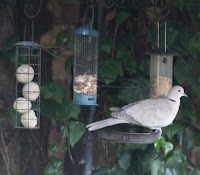Wading Birds of the Essex Mudflats

Essex has the longest shoreline of any county in the UK. Though the mudflats don’t always look pretty on a dank winter day, it’s productive and food rich ecosystem is one of the reasons that Essex welcomes so many wading bird species each winter. Beautiful Godwits My personal favourites are the bar-tailed and black-tailed Godwits. They are a large bird, and very pretty in breeding plumage. They form large flocks along the shorelines as they probe the mud for invertebrates. Tiny numbers of black-tailed godwits breed in the UK but they are on the UK conservation red list. We see them here in Essex as they over winter from their Icelandic breeding locations. Project Godwit is working hard to help this beautiful bird’s long term future in the UK. If you see a ringed bird, let them know! Our mudflats also welcome large numbers of knot and dunlin for the winter. Large flocks of Dunlin looking for their dinner! turnstone are common along Leigh seafront and near S

